Abstract
Cercarial dermatitis is a parasitic impasse that has worldwide distribution. The condition manifests itself as a highly pruriginous skin rash and is due to penetration of the dermis by larval stages (furcocercariae) of avian trematodes. Many species may be responsible for this disease. In Europe the genus Trichobilharzia is widely represented, in particular by the species T. ocellata; the definitive host is the duck (Anas platyrhinchos); the intermediate hosts are snails of the genus Lymnea (L. ovata or L. stagnalis). In France, cases of cercarial dermatitis were reported in June and July 1994 to the health authorities of three départements in the Pays de la Loire Region (western France). The epidemiological situation, common to the three maintained ponds that were concerned, is as follows: high level of eutrophication of the sites, colonization of the ponds by L. ovata, and settlement by many duck colonies. The simultaneous occurrence of these three phenomena, combined with long hours of sunshine in the summer, is responsible for most of the foci of cercarial dermatitis recently described in Europe. Control of this condition is difficult, requiring strict maintenance of bodies of water and if necessary the use of molluscicides such as niclosamide. The use of praziquantel in baits for treating the definitive hosts appears to interrupt the natural cycle of the avian Schistosomatidae. In the light of the observations reported here and the analysis of recent publications, cercarial dermatitis may be regarded as an emerging disease. Its public health impact needs to be evaluated at the global level.
Full text
PDF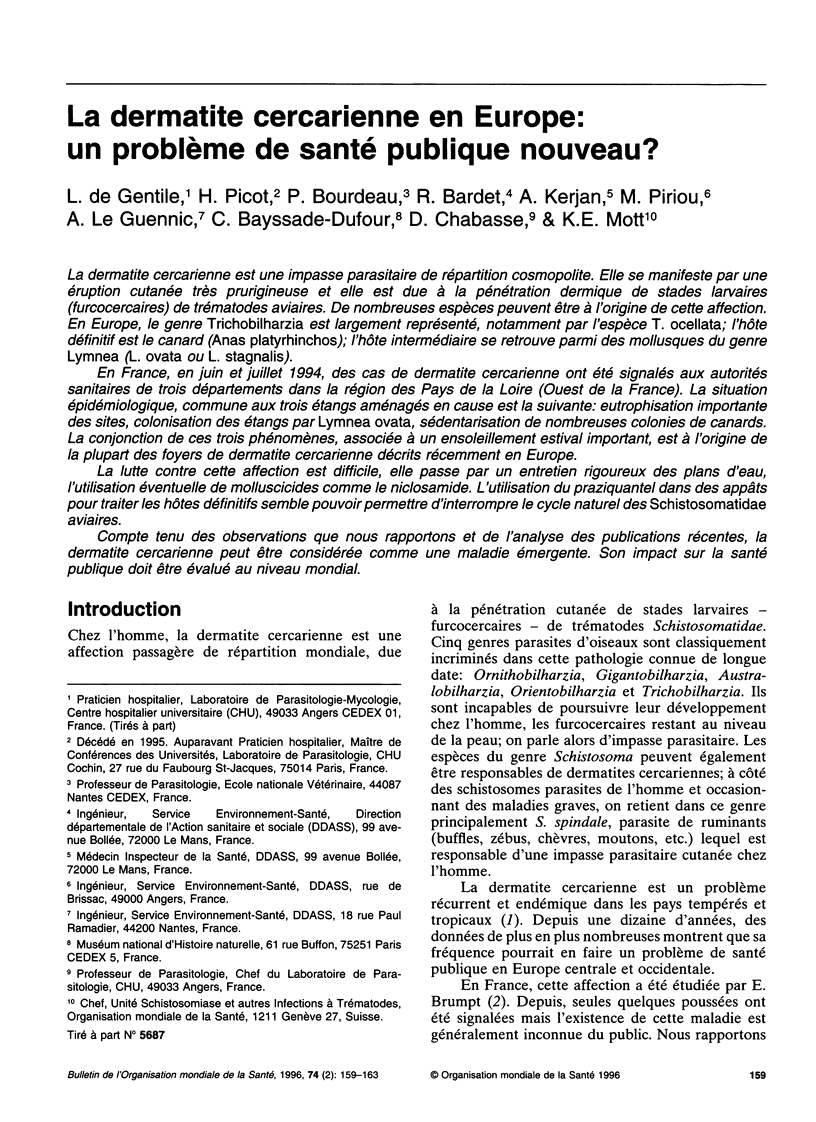
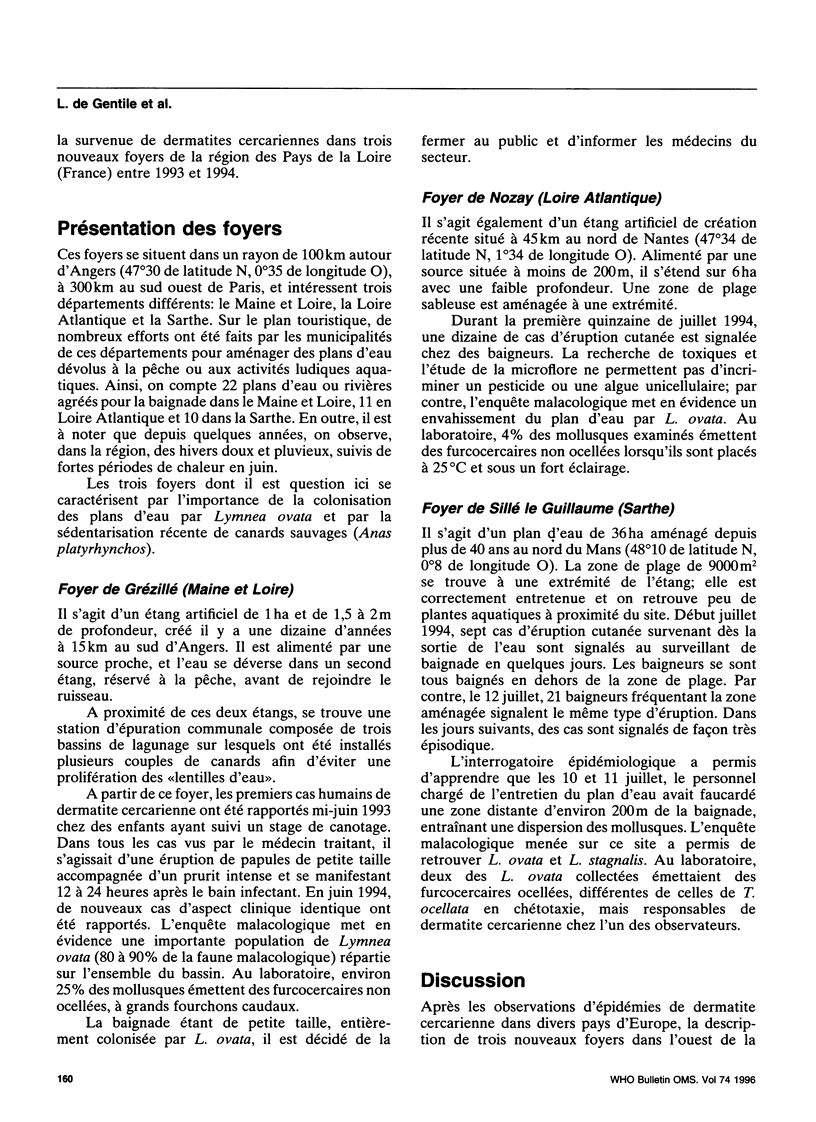
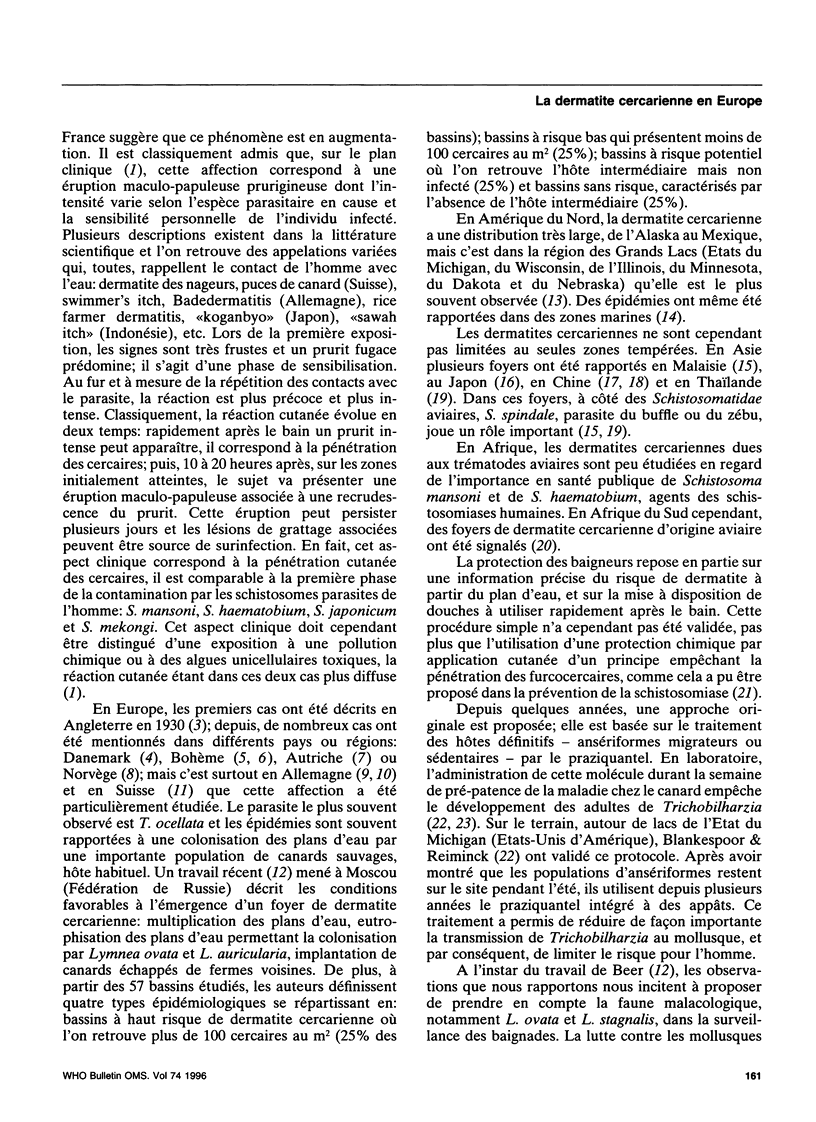
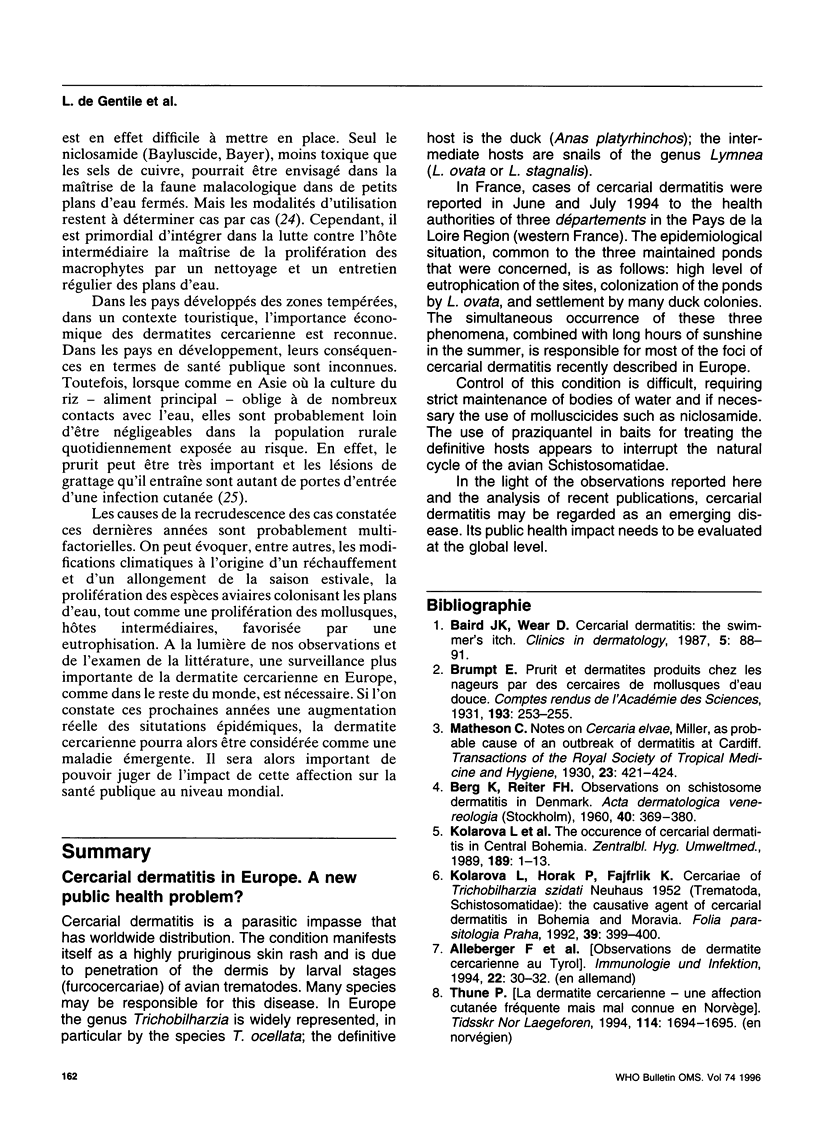
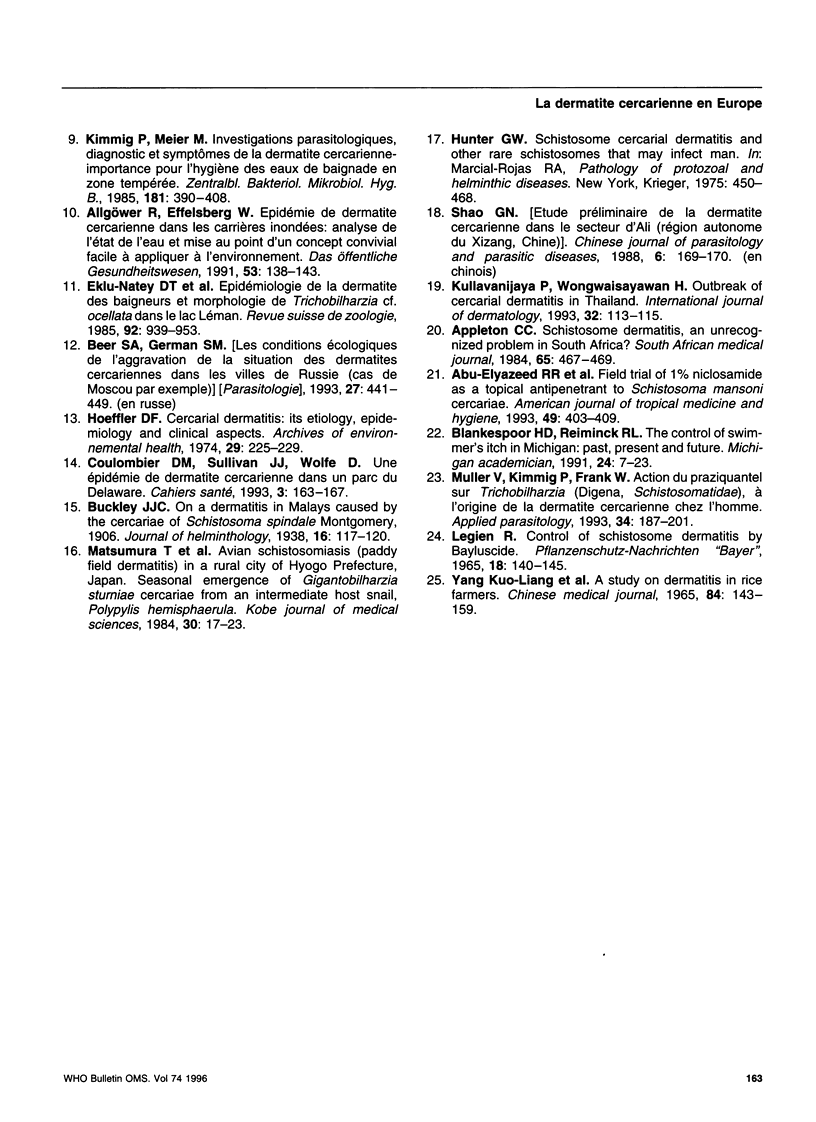
Selected References
These references are in PubMed. This may not be the complete list of references from this article.
- Abu-Elyazeed R. R., Podgore J. K., Mansour N. S., Kilpatrick M. E. Field trial of 1% niclosamide as a topical antipenetrant to Schistosoma mansoni cercariae. Am J Trop Med Hyg. 1993 Oct;49(4):403–409. doi: 10.4269/ajtmh.1993.49.403. [DOI] [PubMed] [Google Scholar]
- Appleton C. C. Schistosome dermatitis--an unrecognized problem in South Africa? S Afr Med J. 1984 Mar 24;65(12):467–469. [PubMed] [Google Scholar]
- Baird J. K., Wear D. J. Cercarial dermatitis: the swimmer's itch. Clin Dermatol. 1987 Jul-Sep;5(3):88–91. doi: 10.1016/s0738-081x(87)80013-5. [DOI] [PubMed] [Google Scholar]
- Kimmig P., Meier M. Parasitologische Untersuchungen, Diagnose und Klinik der Zerkariendermatitis--Hygienische Bedeutung für Badegewässer gemässigter Zonen. Zentralbl Bakteriol Mikrobiol Hyg B. 1985 Dec;181(3-5):390–408. [PubMed] [Google Scholar]
- Kolárová L., Gottwaldová V., Cechová D., Sevcová M. The occurrence of cercarial dermatitis in Central Bohemia. Zentralbl Hyg Umweltmed. 1989 Oct;189(1):1–13. [PubMed] [Google Scholar]
- Kolárová L., Horák P., Fajfrlík K. Cercariae of Trichobilharzia szidati Neuhaus, 1952 (Trematoda: Schistosomatidae): the causative agent of cercarial dermatitis in Bohemia and Moravia. Folia Parasitol (Praha) 1992;39(4):399–400. [PubMed] [Google Scholar]
- Kullavanijaya P., Wongwaisayawan H. Outbreak of cercarial dermatitis in Thailand. Int J Dermatol. 1993 Feb;32(2):113–115. doi: 10.1111/j.1365-4362.1993.tb01448.x. [DOI] [PubMed] [Google Scholar]
- Matsumura T., Sawayama T., Honda M., Asada S. Avian schistosomiasis (Paddy Field dermatitis) in a rural city of Hyogo Prefecture, Japan--seasonal emergence of Gigantobilharzia sturniae cercariae from an intermediate host snail, Polypylis hemisphaerula. Kobe J Med Sci. 1984 Apr;30(1-2):17–23. [PubMed] [Google Scholar]
- Müller V., Kimmig P., Frank W. Die Wirkung von Praziquantel auf Trichobilharzia (Digenea, Schistosomatidae), einen Verursacher von Badedermatitiden beim Menschen). Appl Parasitol. 1993 Sep;34(3):187–201. [PubMed] [Google Scholar]
- Yang K. L., Tchou T. K., T'ang C. C., Ho T. K., Luo H. C. A study on dermatitis in rice farmers. Chin Med J. 1965 Mar;84(3):143–159. [PubMed] [Google Scholar]


